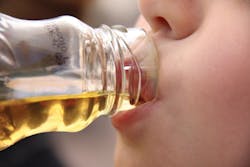Coffee Drinking Survey: Young Adults Drinking More Coffee
At its Centennial Convention, the National Coffee Association (NCA) released top-line 2011 National Coffee Drinking Trends data indicating that consumption among consumers 18 to 39 years of age has rebounded to 2008-2009 levels following a decline last year. The finding mirrors increased confidence expressed by that group about their personal financial situation. The study also found that the coffee category remains strong, narrowing the already slim lead of soft drinks.
"2011 NCDT data show that coffee's relevancy remains strong amid a proliferation of beverage options," said Robert F. Nelson, NCA president and CEO in a prepared statement. "A rebound in consumption among younger drinkers demonstrates strong category loyalty, which suggests a solid customer base for future growth."
In the 2011 study, 40 percent of those 18 to 24 said they drink coffee daily, up from 31 percent in 2010 and on par with 2009's 40 percent. For those 25 to 39 years old, 54 percent said they drink coffee daily, up from 44 percent in 2010 and ahead of 2009's 53 percent. These figures aligned with findings that 29 percent of those 18 to 39 felt better about their financial situation than last year, while other age groups did not.
Gourmet coffee continues to be a significant portion of total coffee consumption - indicating that consumers want to maintain coffee quality even as the economy is uncertain.
The vast majority of coffee consumers drink coffee at home past day (86 percent) as compared with 24 percent who drink coffee out of home past day, consistent with last year's figures. These figures include those who drink coffee both at home and away.
Single-cup systems penetration is growing at an average of 1 percent per year, and 35 percent of those with a pod system acquired it in the past six months. Also, people who buy the pod system are now more likely to use it to replace their current brewer. Perception of the single-cup systems is improving - moving from 26 percent who think the systems are excellent or very good in 2007 to 45 percent who think the systems are excellent or very good in 2011.
For more information, visit www.ncausa.org.
